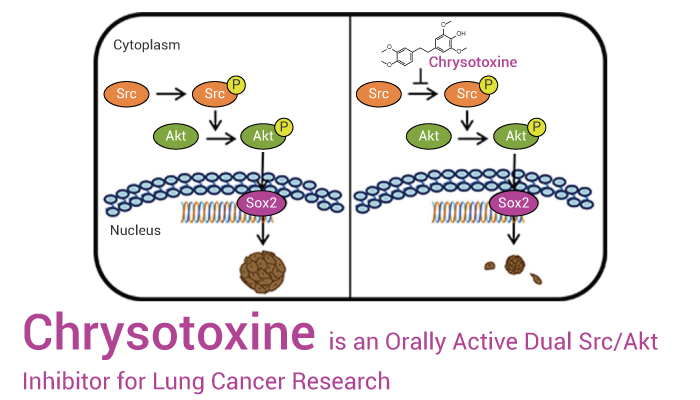Cancer stem cells (CSCs) hold the center control for heterogeneity of cancer cells in tumors as they proliferate and differentiate to other cells with a lower hierarchy of stemness line during tumorigenesis. However, accumulating evidence has pointed out that CSCs, unique cancer cells with capabilities of self-renewal and pluripotency, are responsible for cancer initiation, progression, and aggression. In addition, the cytokines and growth factors secreted by CSCs are strictly required for maintenance of the whole tumor. CSCs is associated with all kinds of cancers, such as lung cancer. As we all know, lung cancer is one of the most challenging human cancers, due to its high rate of metastasis, therapeutic drug resistance, and high mortality rate.
However, how can we target CSCs? There are studies exhibit that Src increases the cellular expression level of Sox2, the self-renewal pluripotency transcription factor in non-small cell lung cancer (NSCLC) cells. In addition, The activation of Src via phosphorylation at Y416 was shown to activate Akt (phosphorylation at Ser473), which is an important mediator for cell survival, proliferation, and Sox2-regulated stemness. In a word, Akt and Src are potential molecular targets for suppressing CSC-like phenotypes. Hence, we will introduce, Chrysotoxine, a Src/Akt dual inhibitor, which targets these CSCs.

Chrysotoxine is a Src/Akt dual inhibitor that suppresses CSCs phenotypes.
Chrysotoxine (50 nM, 24 h) reduces cell viability and increases apoptosis level in H460 and H23 cells. In addition, Chrysotoxine (5-20 nM, 72 h) suppresses the CSC populations in H460 and H23 cells. Besides, Chrysotoxine (0-20 nM, overnight) decreases the stemness of H460 and H23 cells by suppressing the Src-Akt activating mechanism.
All in all, Chrysotoxine is a potent Src/Akt dual inhibitor for cancer research.
Reference:
[1] Bhummaphan N, et al. J Pharmacol Exp Ther. 2018 Feb;364(2):332-346.